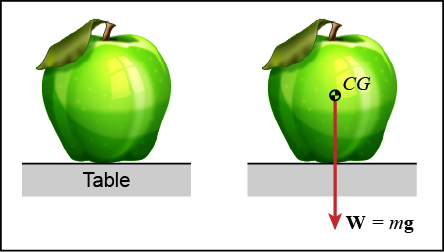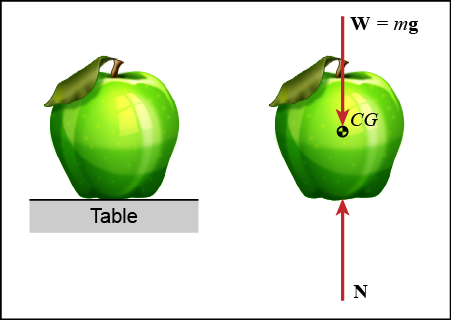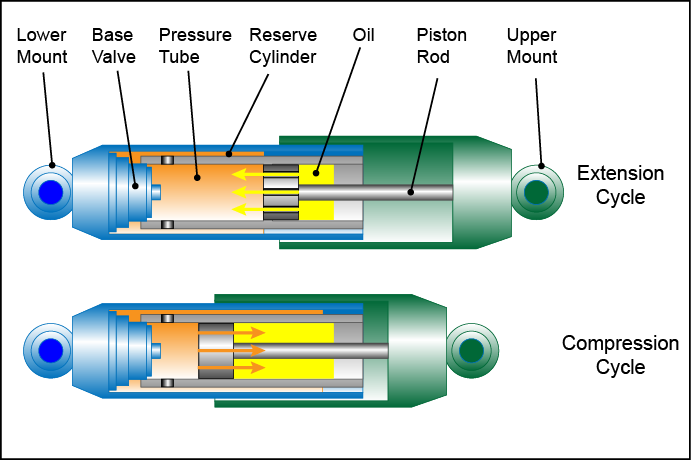Typical Forces Acting on a Body
There are forces that always act on a body such as its weight and forces that typically act on a body such as the normal and friction forces. These are some of the forces that typically act on a body.
- Weight
- Normal force
- Tension force
- Friction force
- Spring force
- Damping force
Weight (W)
A body's weight is the force the body experiences due to gravity. Weight has a magnitude equal to its mass times the acceleration due to gravity and is directed straight down taward the center of the earth.
W = mg

Normal force (N)
The reaction of a surface to its contact with a body is the normal force. The normal force has a direction that is perpendicular (or normal) to the surface the body is contacting.

Tension force (T)
A tension force results from pulling on a cable, rope or chain and always acts along the line of the supporting medium.

Friction force (Ff )
Friction occurs between two contacting surfaces. If the surfaces are moving relative to each other the friction force is called kinetic friction and acts to retard or slow down the motion. The energy of kinetic friction dissipates in the form of heat. If the surfaces are not moving relative to each other the friction force is called static friction and acts to prevent motion.

Spring force (Fs)
The spring force generated by a linear spring is often described by Hooke's law Fs = kx, where k is the spring constant and x is the deformation of the spring.

Damping force (Fd)
The damping force generated by a damper (e.g. a shock absorber), can often be modeled as Fd = cv, where the force is proportional to the body's speed (v) and c is the damping coefficient.

